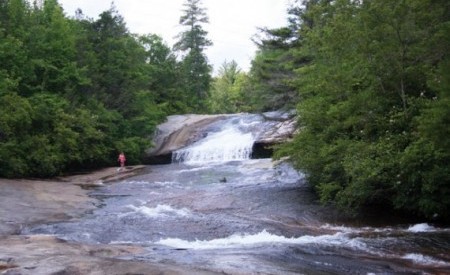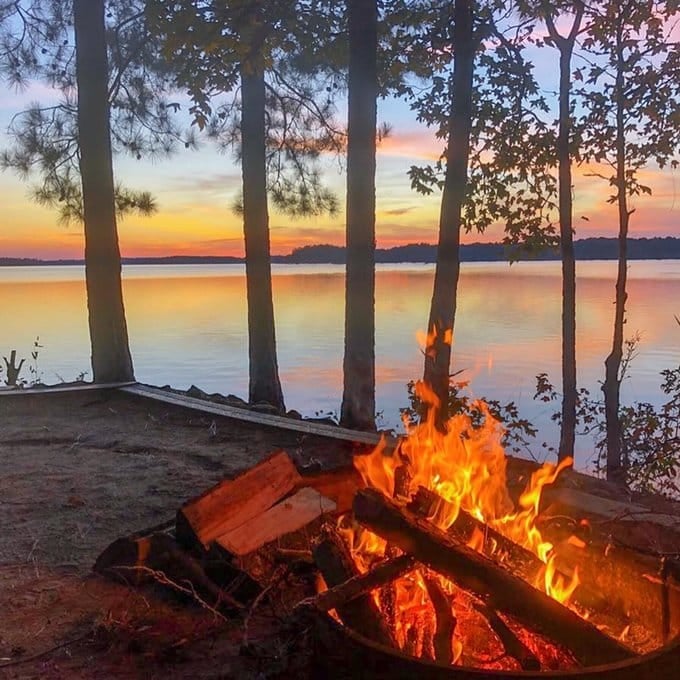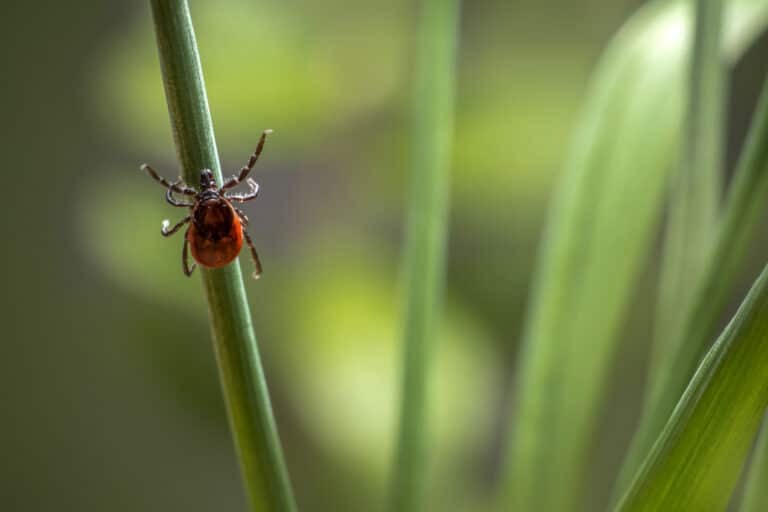Hunger for Adventure: Katniss reunited with Peeta in Dupont State Forest.
Is it possible for a forest to be a movie star? If so, DuPont State Recreation Forest in Western North Carolina would have a string of Oscars to its name. Most recently, and most famously, DuPont was a prominent character in the mega-hit The Hunger Games, and the forest’s most famous waterfall was the setting for Daniel Day Lewis’s “I will find you” scene in The Last of the Mohicans. While the film industry has put DuPont on the map lately, the story of the forest is worthy of its own Hollywood script, complete with bad guys, last-minute heroes and a satisfyingly happy ending.
Today, DuPont measures 10,300 acres, acquired over three major land purchases since 1995. The original 7,600 acres was purchased from the DuPont chemical company, which operated a large factory on the property. A small 500-acre parcel was acquired in 2000, but completing the park is where the story gets interesting.
The initial DuPont land did not include three of the iconic waterfalls in the surrounding area: High Falls, Triple Falls, and Bridal Veil. This tract was purchased under dubious terms by a real estate developer determined to build a gated residential community around the lure of the falls. What followed was a two-year grassroots effort to secure public access to the area that culminated with the governor stepping in to declare eminent domain on the parcel and purchase it back from the developer—in an election year no less!
Last year, North Carolina declared DuPont State Forest the country’s first Recreational State Forest, thus completing the journey from industrial center to potential private vacation resort to pristine outdoor sanctuary. This new designation is what makes DuPont unique, according to Bev Parlier, president of Friends of DuPont Forest, a volunteer organization dedicated to enhancing the public use and enjoyment of the forest.
“This is the first recreational forest in the state and the country, so we’re kind of proud of that,” she said. “It changes the managing emphasis to recreation and preservation. There is some timber management, but it is now focused on just recreation, so we are excited about that.”
The main draw of the forest now is its 80 miles of trail. While some trails existed when the land still belonged to the DuPont company, the system has evolved immensely. Working with SORBA, IMBA, professional trail companies, and the U.S. Forest Service, volunteer organizations like the Friends of DuPont Forest have created one of the best mountain biking areas in the country. The buffed trails now draw riders from across the country.
“Years ago it was just locals, and now people are coming from all over the country,” Parlier said. “The trails tend to be groomed more than other places around here. It’s really getting popular now with biking.”
From Pisgah to Tsali, there is no shortage of singletrack in Western North Carolina. What sets DuPont apart are the conditions and variety of trails.
“The trails are great for biking, they are not rooty or rocky,” Parlier explains. “We can bring beginners here who have never been on a bike before and do easy stuff, or experts who want to do more technical trails.”
The smoothness of the trails takes a lot of maintenance, but a steady stream of volunteers keep things in order and DuPont seems to be embracing its growing reputation. There are six parking areas to easily access every nook and cranny of the trail system, one of which features a bike skills park, kiddie mile trail, and pump track. Parlier recommends the popular figure eight of Burnt Mountain, Cedar Rock, and Big Rock Trails from the Corn Mill Shoals Access, which features technical sections, fast downhills and slick rock reminiscent of Moab.
All those miles of trail are not just for two wheelers, however. Transylvania County is known as “The Land of Waterfalls,” and DuPont’s falls are some of its most famous. Casual hikers flock to the forest to catch a glimpse, and maybe relive some of that movie magic they’ve seen on the big screen.
“The waterfalls are more of a hiker draw,” said Parlier. “First thing people say when they come to DuPont is, ‘Let’s check out the waterfalls.’ Then number two is, ‘Oh, there’s trails here too. Let’s check out the trails.’”
The hike to the top of the highest point in the forest, Stone Mountain, is a quad-buster, climbing 1,100 feet over just a few miles, but it’s worth it. Granite slabs at the summit provide stunning vistas of the Pisgah Range.
“One thing you see here that you don’t see in a lot of places is that all the user groups get along: the bikers, hikers, equestrians,” Parlier explains. “I think everybody understands this is a unique place. At one time a private developer was going to have it. We’re so thankful that didn’t happen and we know it’s a gem in the Pisgah area.”
True Colors
There are two unique color specific animals that roam DuPont State Recreation Forest, and if you are lucky, or time it right, you may see them during a visit.
The first is the Blue Ghost Firefly, which comes out for mating season for a month each spring. Instead of blinking yellow like a typical firefly, the Blue Ghost’s light glows an eerie blue continuously for an extended period before going out to ‘recharge.’ These fireflies are only found in a few places in North America, so if you are in the area around the end of May, check them out.
The other unique creature of the Brevard area is easier to spot, the white squirrel. Legend has it the original pair of white squirrels arrived on a carnival truck 60 years ago. They soon escaped and began breeding; now almost 30 percent of squirrels in Brevard are white. They are so prominent, and so beloved by locals, that a town ordinance made it illegal to harm them in 1986. Brevard holds a White Squirrel Festival every year to celebrate their town and its unique inhabitants.
From the Field: DuPont State Forest from Summit Publishing on Vimeo.








